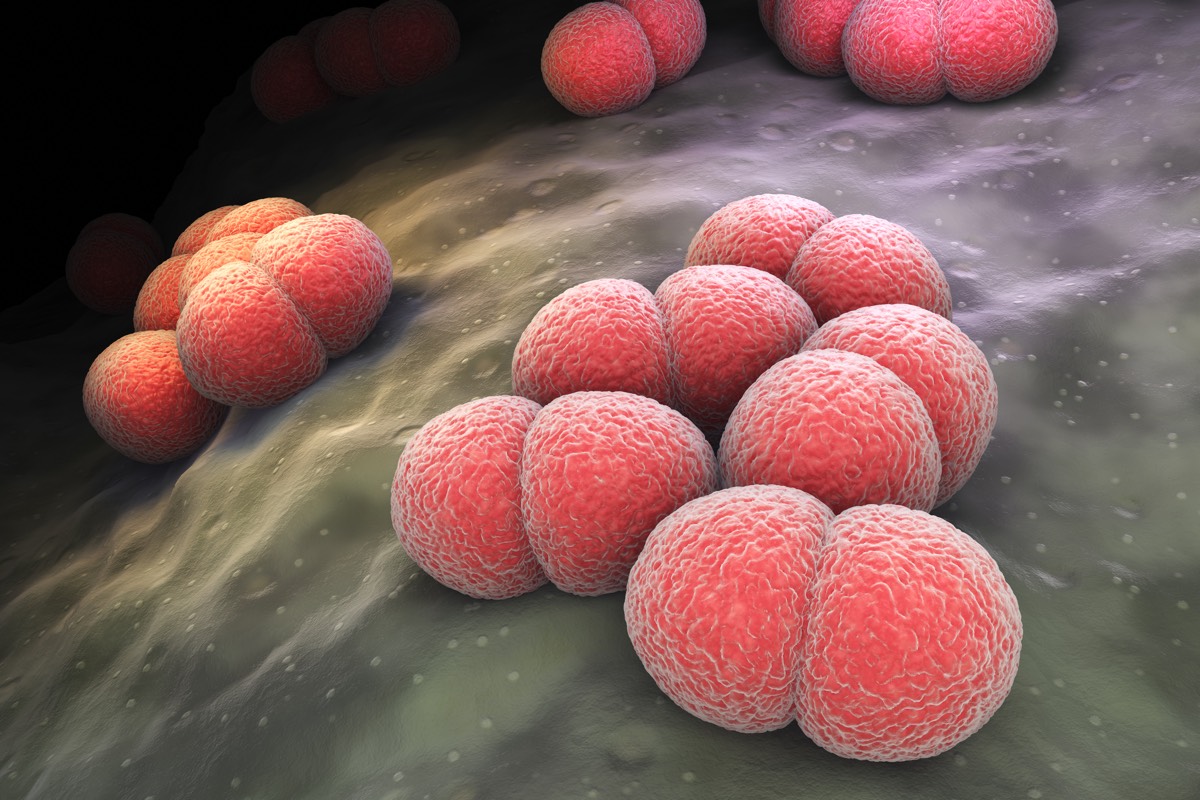Woman Contracts Rare Bacterial Infection on 12-Hour Flight

In a rare case, a woman contracted a potentially deadly bacterial infection while on a 12-hour flight from Japan to Germany, according to a new report.
Called meningococcal disease, this bacterial infection is generally transmitted only through close contact, for example, by kissing or living in close quarters with someone who is sick, according to the World Health Organization. The new report is only the third case ever reported of this disease being transmitted on an airplane, said Yushi Hachisu, of the Chiba Prefectural Institute of Public Health in Chiba, Japan, who helped investigate the case.
Hachisu presented the case on Oct. 5 at IDWeek, an infectious disease conference in San Diego.
Meningococcal disease is caused by the bacteria Neisseria meningitidis. About 10 percent of the population carries this bacteria in their nose and throat without showing any symptoms of disease. But the bacteria can cause serious illness if it gets into the blood or the brain. In the brain, the bacteria can cause meningitis — a swelling of the membranes that cover the brain and spinal cord; in the blood, it can cause and infection called septicemia.
The woman and her husband, both in their 50s, were traveling from Japan to Germany on Aug. 8, 2015, according to the report. They happened to be on the same flight as a team of Scottish and Swedish scouts who were returning from the World Scout Jamboree, an international gathering of scouts ages 14 to 17. Six of the scouts later developed meningococcal disease in an outbreak that was linked to attendance at the jamboree. [27 Devastating Infectious Diseases]
The married couple did not sit directly next to the scouts, but sat in a row behind and across the aisle from the Scottish scouts. They noticed that one of the scouts seated in front of them was coughing throughout the flight, the report said.
Once they arrived in Germany, the couple hopped on another flight to Spain, where they went sightseeing. But a few days later, on Aug. 11, the woman felt tired and developed pain in her throat and a cough. Her husband also developed pain in his throat and a mild fever.
Sign up for the Live Science daily newsletter now
Get the world’s most fascinating discoveries delivered straight to your inbox.
They felt sick for the rest of their trip, but felt somewhat better upon their return to Japan on Aug. 16, the report said. However, on Sept. 19, the woman developed a sudden high fever and chills, as well as pain in her joints. She visited four health care facilities and underwent tests before she was finally hospitalized on Sept. 25.
The fluid in her joints tested positive for N. meningitidis bacteria, which means she had a blood infection with N. meningitidis that spread to her joints. Samples taken from the husband's nose and throat also tested positive for N. meningitidis, although he did not develop further symptoms. Both the woman and her husband were infected with the same strain of N. meningitidis that caused the outbreak in the scouts, the report said. The woman was treated with antibiotics and recovered.
Meningococcal disease is rare in Japan, with only about three cases per 10 million people, the researchers said.
The new report "strongly suggests that N. meningitidis was transmitted from the Scottish scouts to the Japanese couple during their international flight," the researchers wrote in their report.
Still, the overall risk of transmitting meningococcal disease on an airplane is low, Hachisu said. But it can happen — in 2005, officials in Australia reported cases of two people who got sick with N. meningitidis after traveling on a flight from Los Angeles to Sydney. Officials determined it was likely that one of the infected passengers spread the bacteria to the other passenger, or both of the infected individuals got the bacteria from another person on the flight who wasn't showing symptoms.
The U.S. Centers for Disease Control and Prevention recommends that passengers who sit next to someone with N. meningitidis on a flight that is more than 8 hours long receive preventive antibiotics. A longer flight increases the chance of transmission, Hachisu said.
Original article on Live Science.

Rachael is a Live Science contributor, and was a former channel editor and senior writer for Live Science between 2010 and 2022. She has a master's degree in journalism from New York University's Science, Health and Environmental Reporting Program. She also holds a B.S. in molecular biology and an M.S. in biology from the University of California, San Diego. Her work has appeared in Scienceline, The Washington Post and Scientific American.









